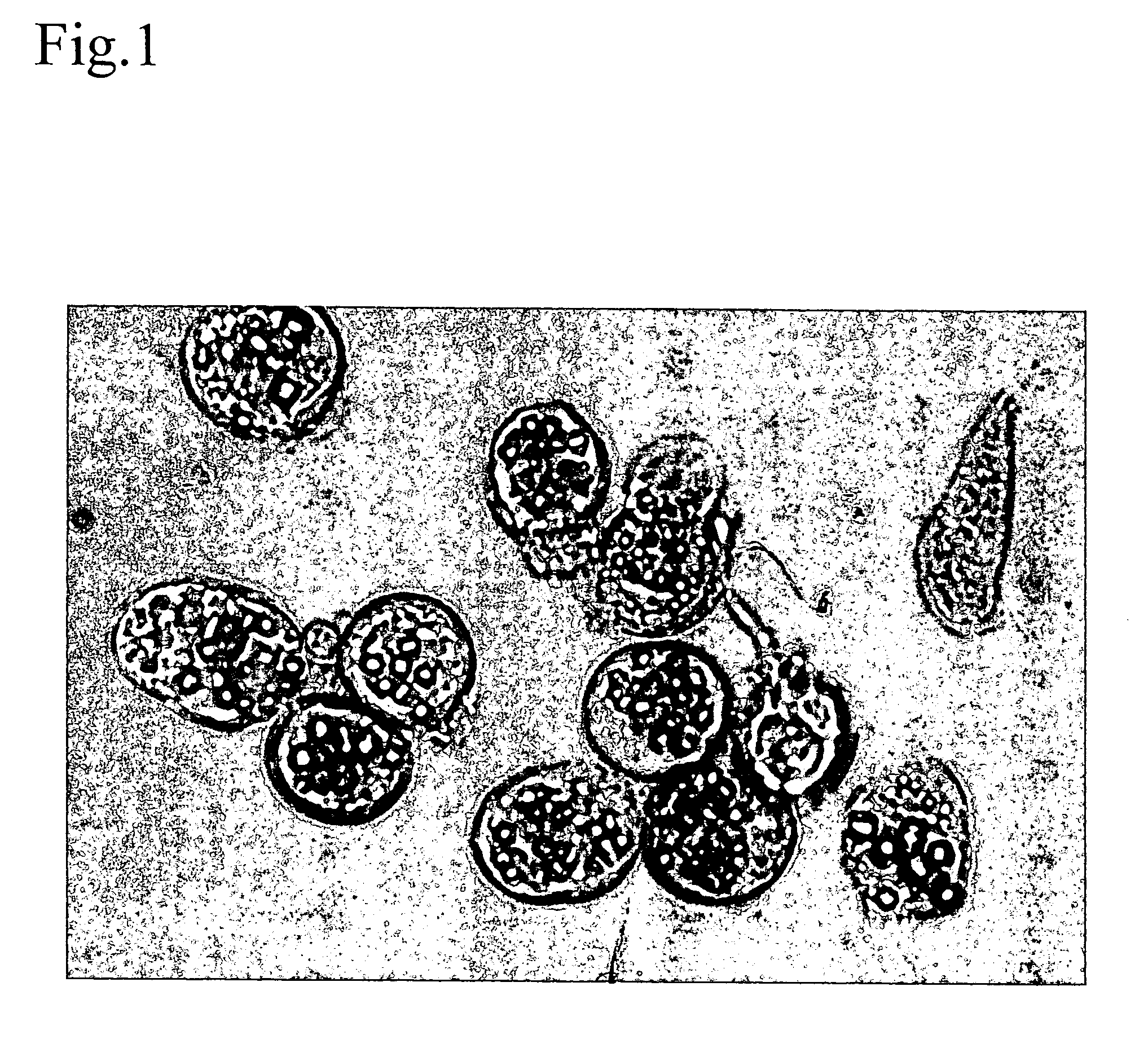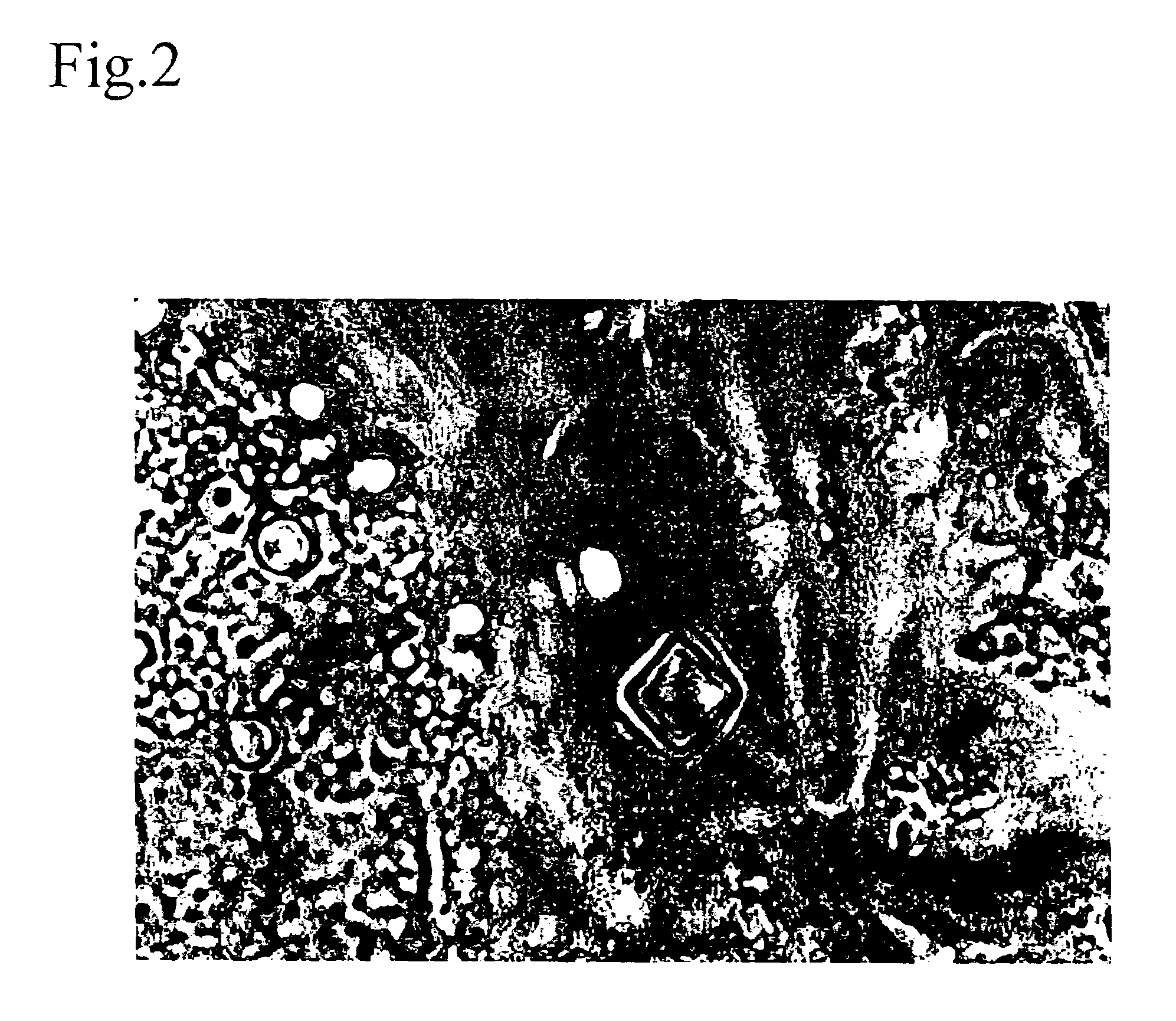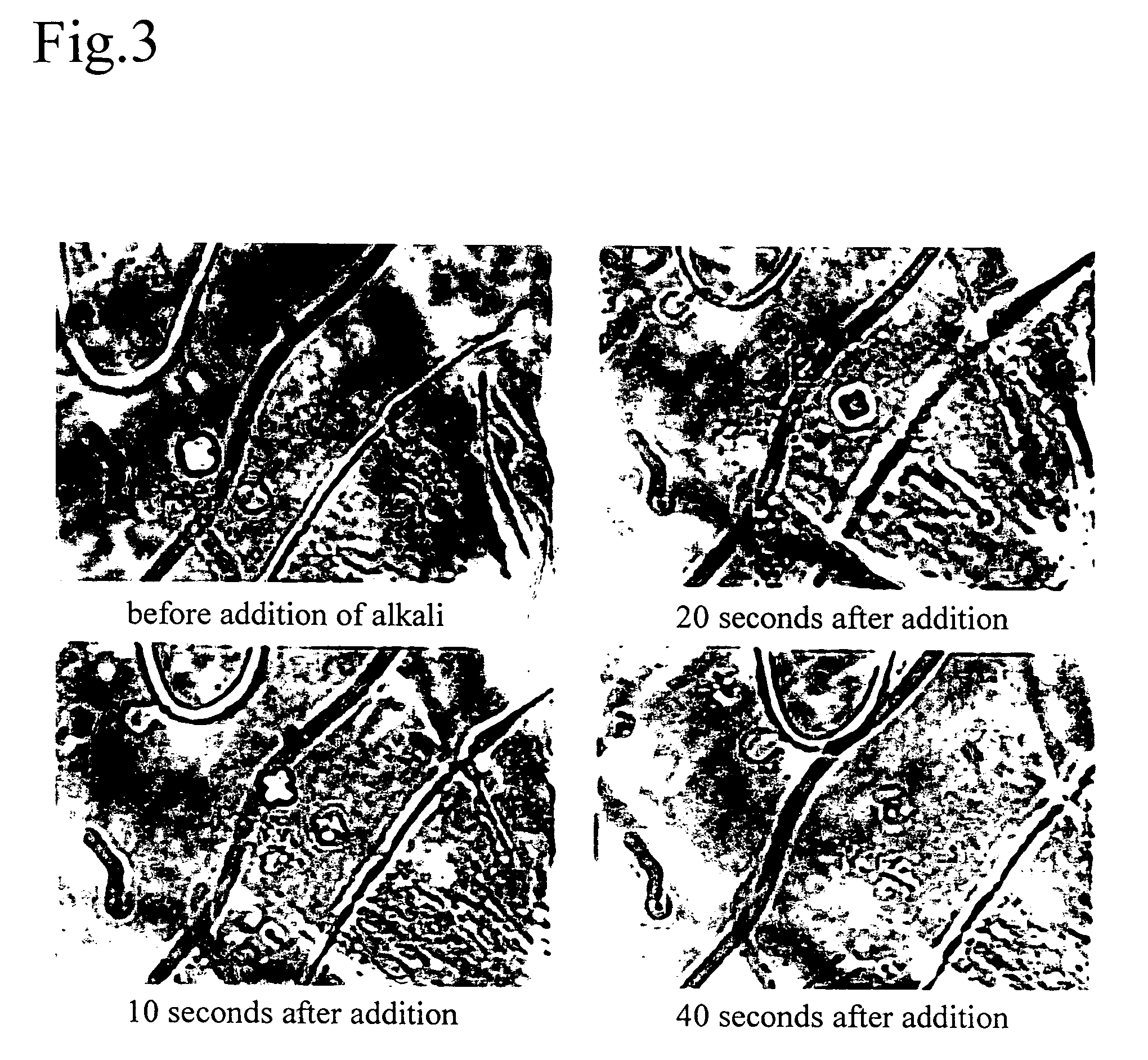Cytoplasmic polyhedrosis virus polyhedrin protein complex
a polyhedrin and cytoplasmic polyhedrin technology, applied in the field of protein complexes, can solve the problems of destroying the stability of the protein, affecting the occlusion efficiency of the protein, and the inability to apply the protection method to any kind of protein, so as to improve the occlusion efficiency, improve the size (molecular weight) of the protein, and efficiently occlude the objective protein
- Summary
- Abstract
- Description
- Claims
- Application Information
AI Technical Summary
Benefits of technology
Problems solved by technology
Method used
Image
Examples
reference example 1
[0091]cDNA synthesized in (1) was cloned in the plasmid pBluescript11 [manufactured by Stratagene Co.], and the deletion mutants for each of 5 clones obtained were formed by using the Deletion Kit for kilo-sequence (manufactured by Takara Co.).
[0092]The ABIPRISM terminator cycle sequencing kit and the 373A automated sequencer manufactured by PE Applied Biosystems Co. were used for analysis of the nucleotide sequence; it was demonstrated that S4 of BmCPV is 3,259-bases long as shown in the Sequence No.1 in the sequence list, which contains a large open reading frame (ORF) having a start codon from the 14th to 16th (ATG) and the stop codon from the 3,185th to 3,187th (TAA). This ORF consists of 1,057 amino acid residues (Sequence No.2), of which molecular weight was estimated to be about 130 kDa. Western blot analysis revealed that there is a band corresponding to about 130 kDa also in purified VP3 of virion. The SDS-PAGE of non-infected cells, AcNPV-infected cells and AcVP3-infected ...
reference example 2
[0093]It is known that GFP is stable at a pH between 5 and 12, and polyhedra is dissolved at a pH exceeding 10.0. Then fluorescence from GFP was measured before and after dissolution of polyhedra to determine whether VP3 was occluded in polyhedra. Polyhedra, after purification, was suspended in 1 ml each of distilled water, 50 mM acetate buffer (pH4.0), and 5 mM carbonate-bicarbonate buffer (pH 11.0). The pH of the suspension in the acetate buffer was gradually elevated by addition of the 5 mol / m3 NaOH solution, and the suspension was incubated at 30° C. for 30 minutes when pH became 6.0, 10.0, and 12.5, and the fluorescence of GFP was excited at 475 nm and measured at 51O nm by the fluorometer (manufactured by Hitachi Seisakusho, Product code F-2000). The result is illustrated in the graph in FIG. 4.
[0094]Single infection with AcVP3 / GFP and double infection with AcVP3 / GFP and AcCP-H were performed in 35-mm Petri dishes, and emission of fluorescence from GEP was confirmed with the O...
reference example 3
[0095]When cells double-infected with AcVP3 / GFP and AcCP-H were examined microscopically, an intense green fluorescence was confirmed along the border of polyhedra of BmCPV. However green fluorescence was noted all over the cytoplasm in cells infected with AcVP3 / GFP alone. Therefore, it was supposed that there might be some interaction between polyhedrin of BmCPV and VP3, though it was still unknown whether VP3 was occluded in polyhedra of BmCPV.
[0096]Then polyhedra was purified from cells double-infected with AcVP3 / GFP and AcCP-H, and suspended in the acetate buffer (pH4.0) to deactivate GFP without dissolving polyhedra, and green fluorescence was measured that was dissolved from polyhedra by elevating pH. Green fluorescence was not noted at pH 10.0 or a lower pH whereas polyhedra was dissolved and green fluorescence was confirmed when pH exceeded 10.0. In contrast, no green fluorescence was detected in a similar measurement after double infection with AcGFP and AcCP-H. These resul...
PUM
| Property | Measurement | Unit |
|---|---|---|
| Structure | aaaaa | aaaaa |
| Stability | aaaaa | aaaaa |
| Crystallization enthalpy | aaaaa | aaaaa |
Abstract
Description
Claims
Application Information
 Login to View More
Login to View More - R&D
- Intellectual Property
- Life Sciences
- Materials
- Tech Scout
- Unparalleled Data Quality
- Higher Quality Content
- 60% Fewer Hallucinations
Browse by: Latest US Patents, China's latest patents, Technical Efficacy Thesaurus, Application Domain, Technology Topic, Popular Technical Reports.
© 2025 PatSnap. All rights reserved.Legal|Privacy policy|Modern Slavery Act Transparency Statement|Sitemap|About US| Contact US: help@patsnap.com



